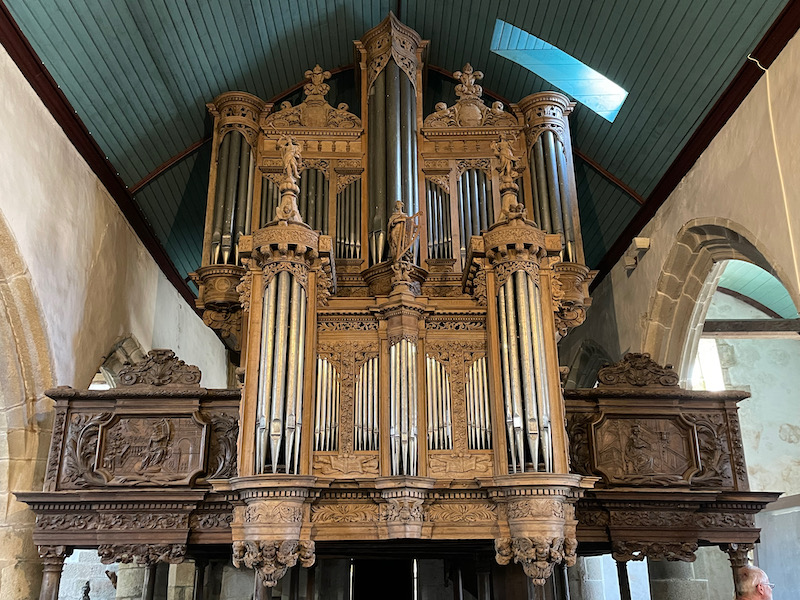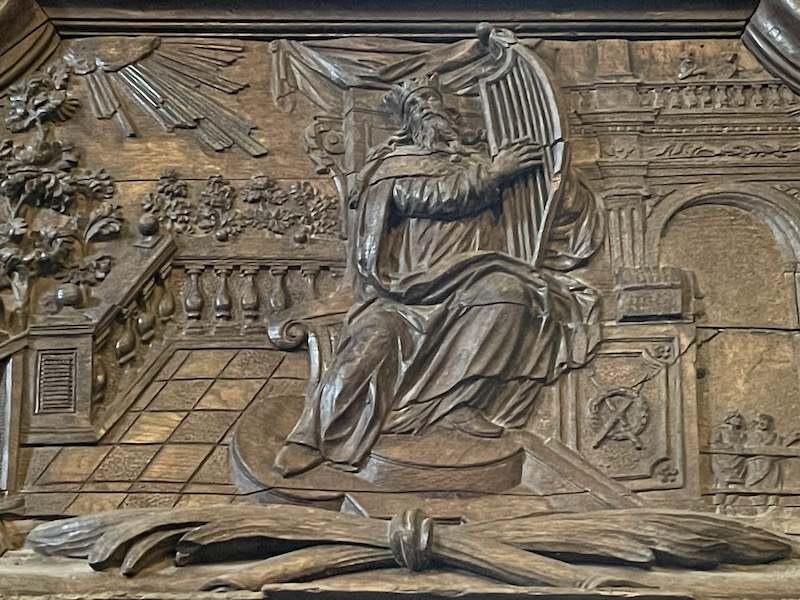Our Blog - Enclos Paroissial of Guimiliau
This architectural ensemble was built in the 16th and 17th centuries. It has all of the main items: the Saint-Miliau church and its bell tower, an ossuary, a cemetery, a Calvary and a triumphal gate.
The triumphal gate was called "Porz ar maro" in the native Breton language, which literally means "gate of death" because it gave access to the cemetery. This one has 2 riders on horseback (or I think they are horses) at the top. The gate is quite plain compared to the Calvary.
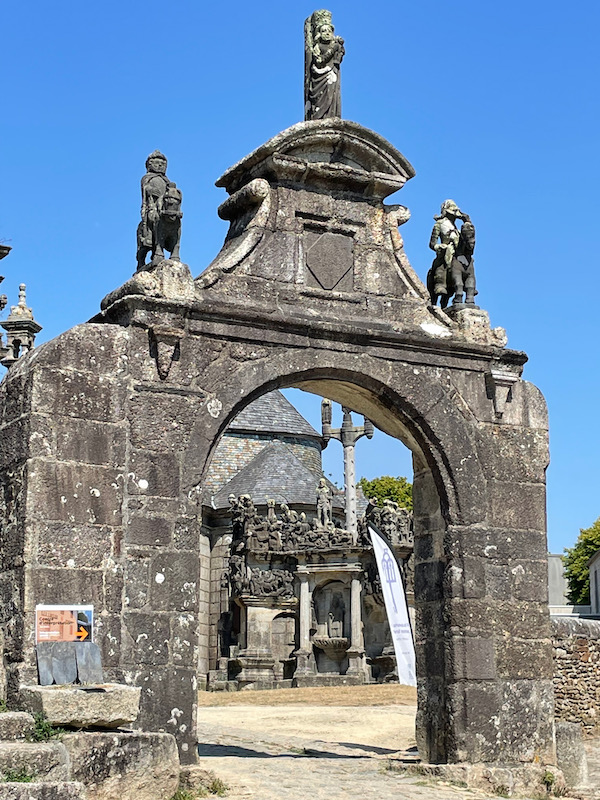
The Calvary was carved out of blue granite between 1581 and 1586. I have the picture at a bad angle so that you can't see the actual cross (sorry). But I was in awe of the bottom of the Calvary, which contains bas-reliefs of various episodes of the Life of Christ. These include the birth, Adoration of the Magi, the Carrying of the Cross, the Entombment, and the Resurrection. There are about 80 characters represented here, and they all are shown in 16th century clothing. However, the clothing is more Spanish-looking than French for that time period, perhaps explained by the presence of Spaniards in Brittany during the era due to the League Wars
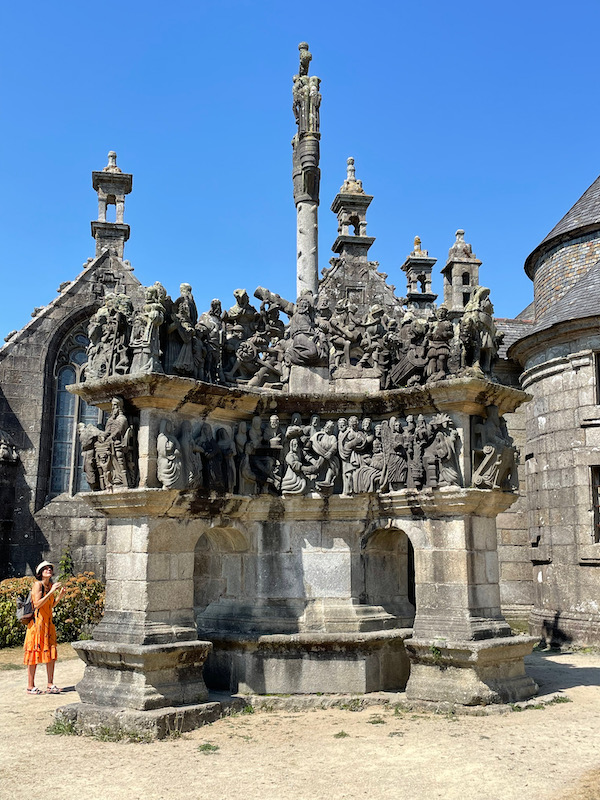
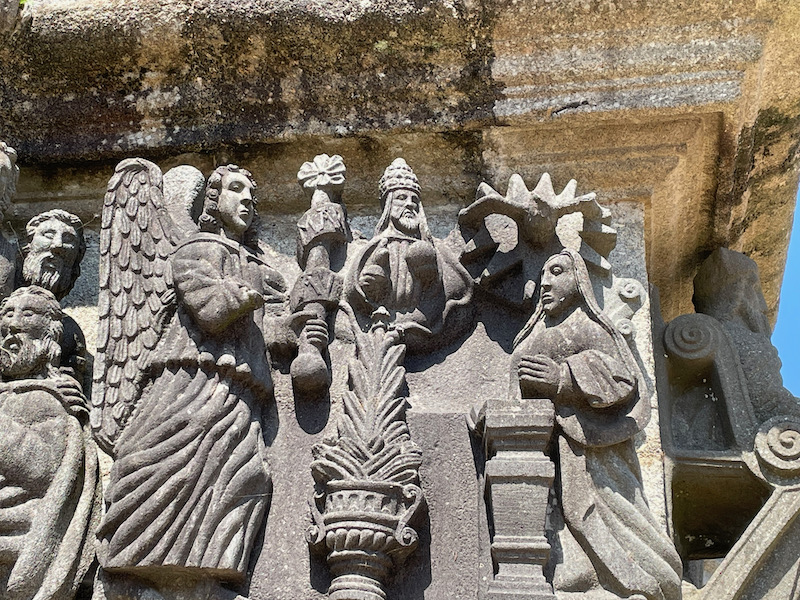
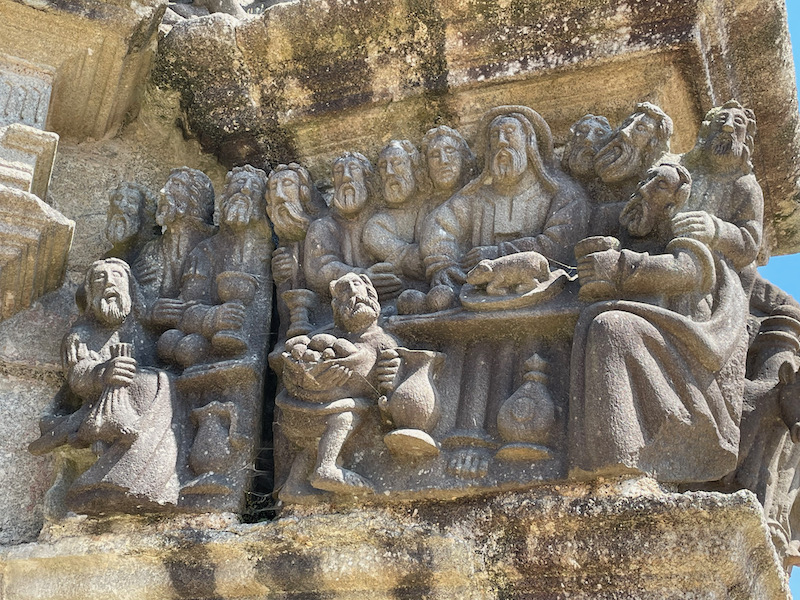
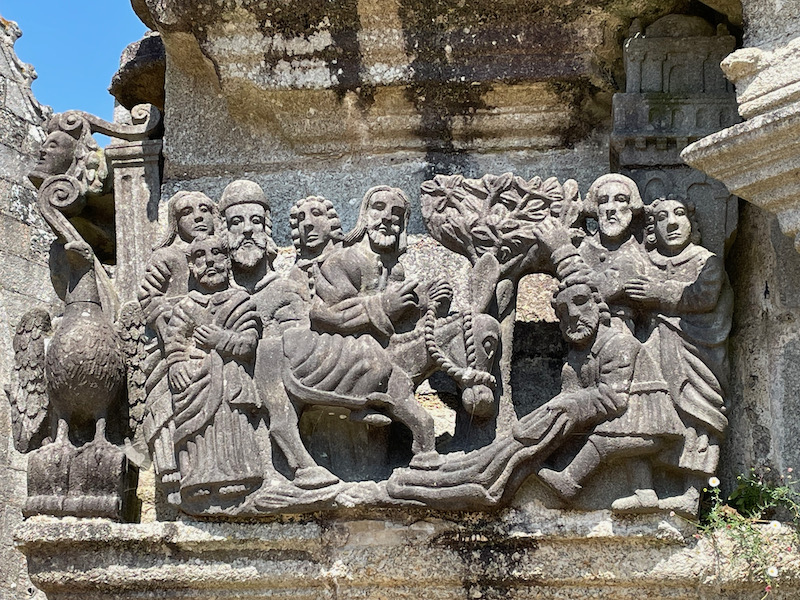
The ossuary dates from 1648 and is now called Sainte-Anne Chapel.
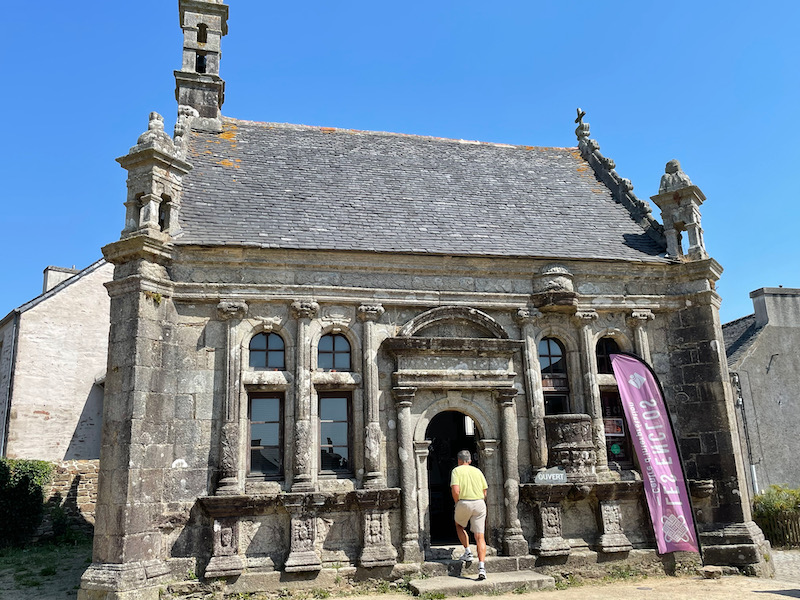
The Saint-Miliau church is a mix of Flamboyant Gothic and Renaissance styles. The bell tower, with a Gothic spire, is in the Beaumanoir style.
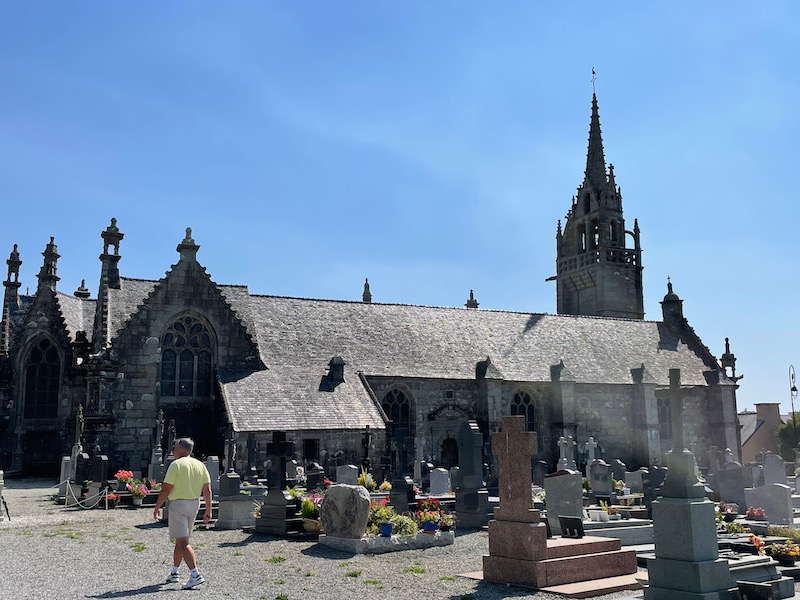
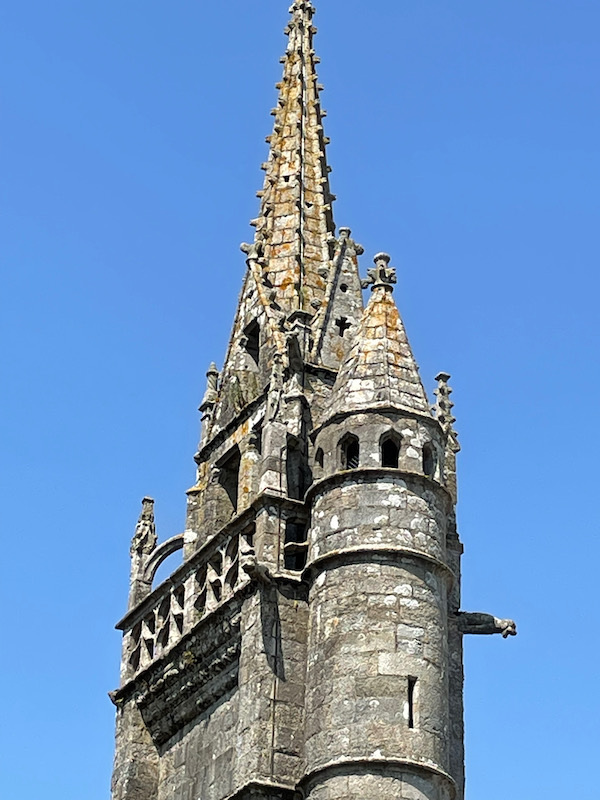
Like many churches, this one has an entry porch with niches for the 12 apostles. Unlike many of the others, this porch actually HAS the statues! They are carved in a type of stone called kersanton, which is similar to granite, easy to carve and is particularly resistant to time and weather. They were done in the time of Louis XIII but are done in a Renaissance style. Over the entry door to the church is a pediment with additional statues. Here you can see the blue color in the ceiling, and the various red colors around the statues. You can also just make out the blue sashes that each of the apostles has.
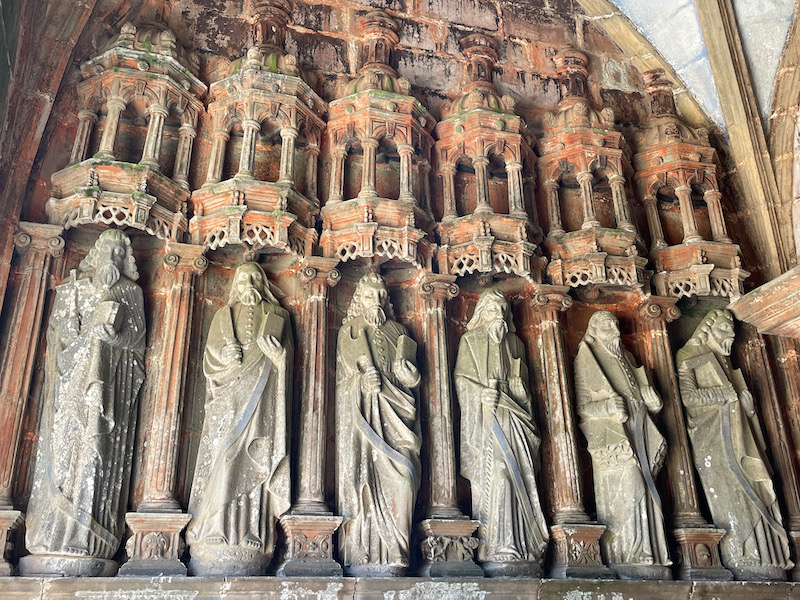
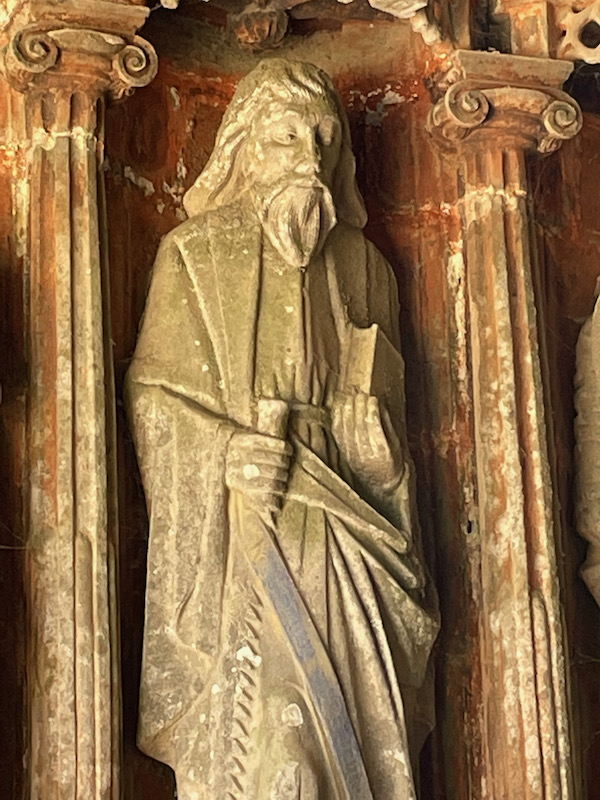
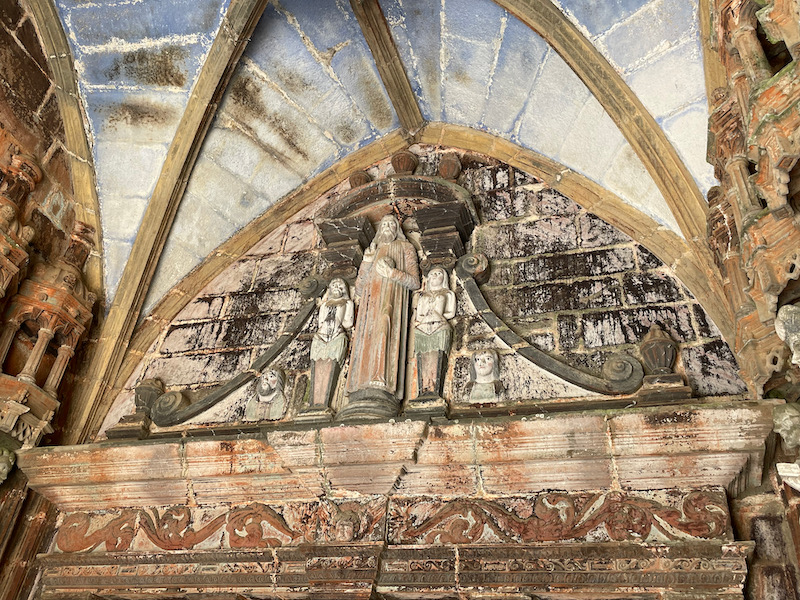
The baptistry is just inside the front door and dates from 1675. The baptismal font itself is granite, surrounded by a magnificent Renaissance canopy of sculpted oak, with twisted columns, statues, and bas-reliefs.
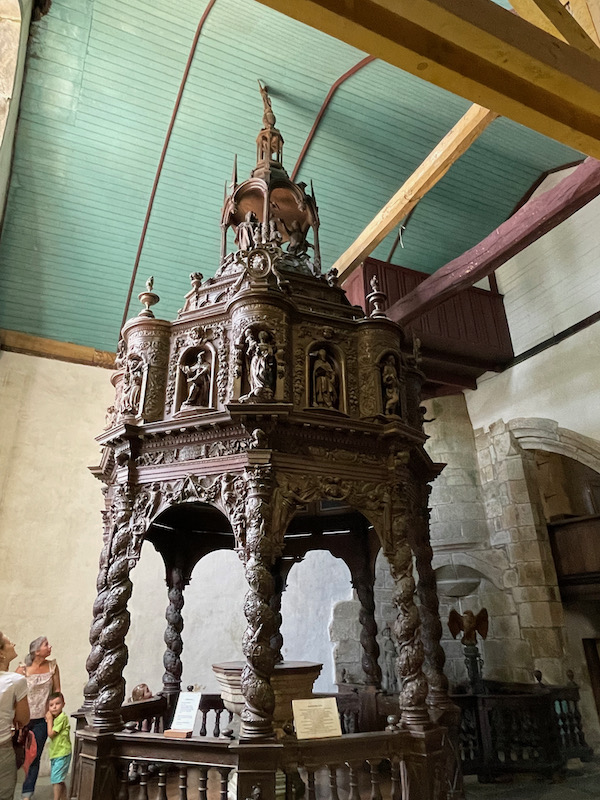
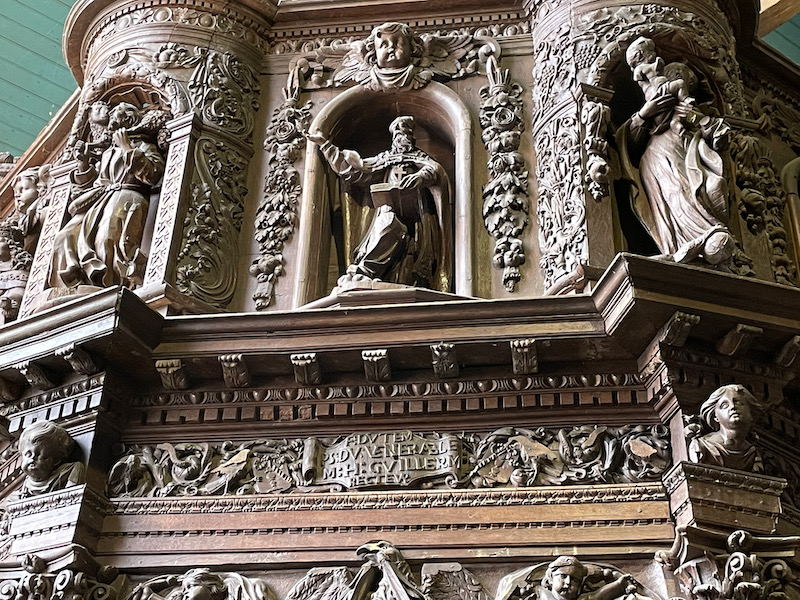
The inside is somewhat Gothic in nature, with the ribbed vaulting in the choir and the somewhat pointed arches down the nave. But the ceiling, which is the typical wooden inverted boat, is quite low for a Gothic church.
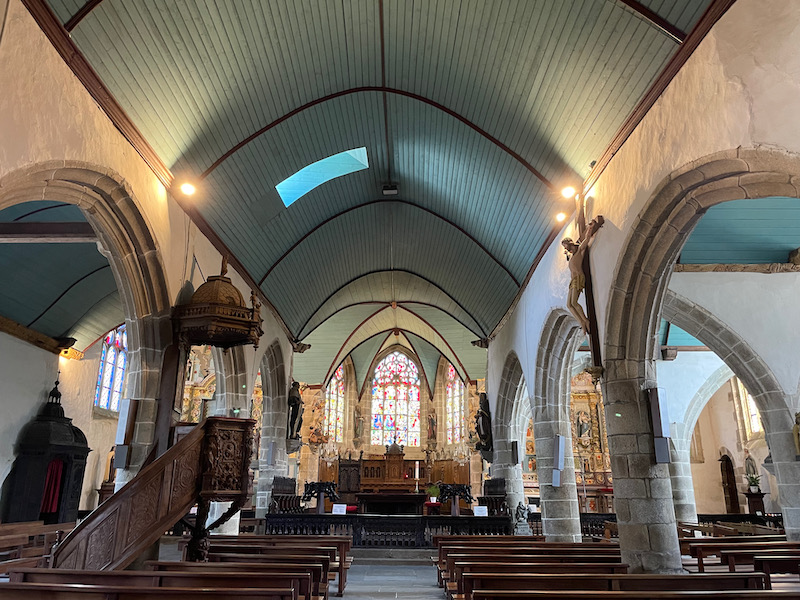
The central stained-glass window dates from 1599 and represents the Crucifixion and the Descent from the Cross. This is the only original window, as all of the other ones disappeared and were replaced in the middle of the 19th century.
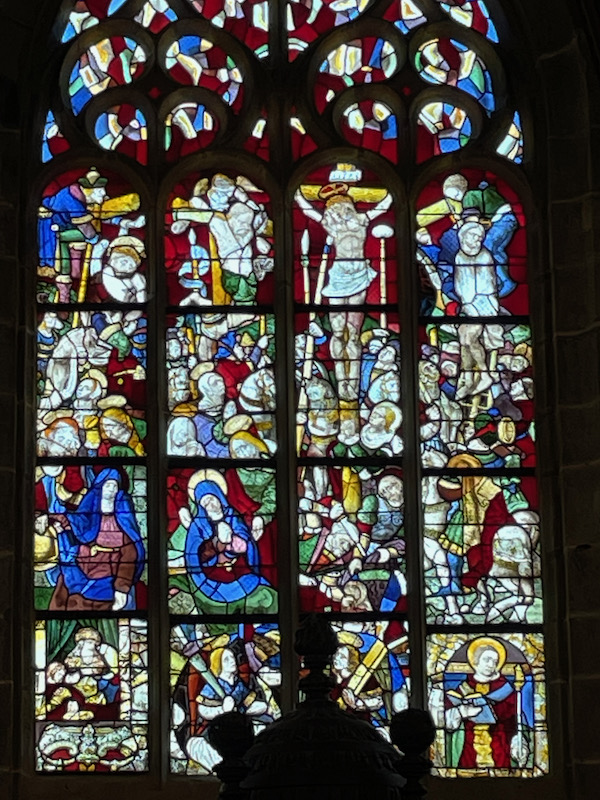
The altarpiece of the Rosary dates from the 17th century and has a Virgin and Child (in the center) giving the rosary to Saint Dominic and Saint Catherine of Siena. Around them are 15 medallions representing the 15 mysteries of the Rosary.
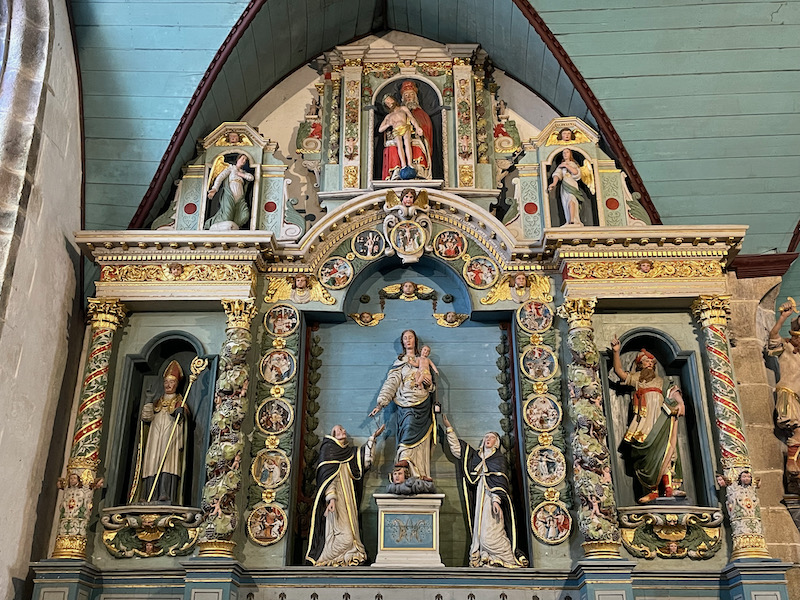
The altarpiece of Saint Miliau dates from the end of the 16th century or the beginning of the 17th century. It has a statue of the saint in the middle, surrounded by scenes from his life. He is a Breton saint from the 6th century with an interesting legend, a good and just prince slain by his evil brother. He is from the family of the kings of Armorica in Brittany along with 2 brothers. He was famous as a benefactor for the poor and is sometimes represented dividing his cloak with a beggar (like Saint Martin of Tours). When he succeeded to the throne, one of his brothers had him assassinated by decapitation. One of the scenes of his life show him holding his own severed head. Mind you, historical references do list Alan I (supposedly his grandfather) as a King of Brittany, but his father, Budic, did not succeed his father as King. Also the dates are a bit off since he was from the 6th century but Alan I died in 907, which doesn't work with the legend.
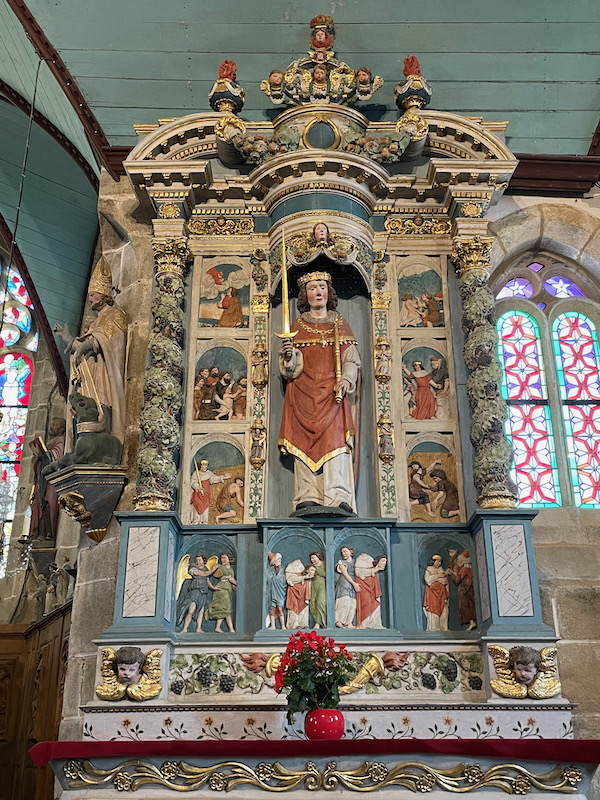
In the choir is a statue of Saint Michael killing the dragon.
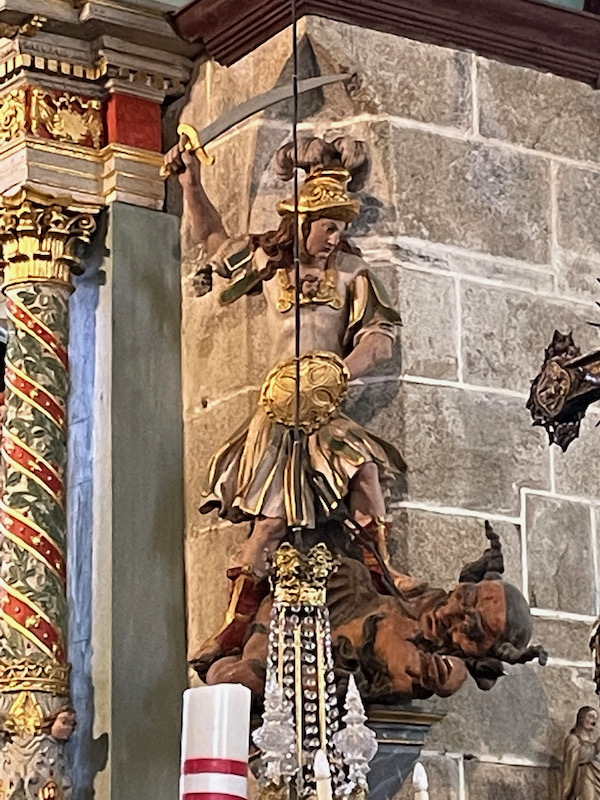
The black oak organ case was carved in the 17th century and restored in 1989. It is decorated with bas-reliefs depicting several scenes, including King David playing the harp.
